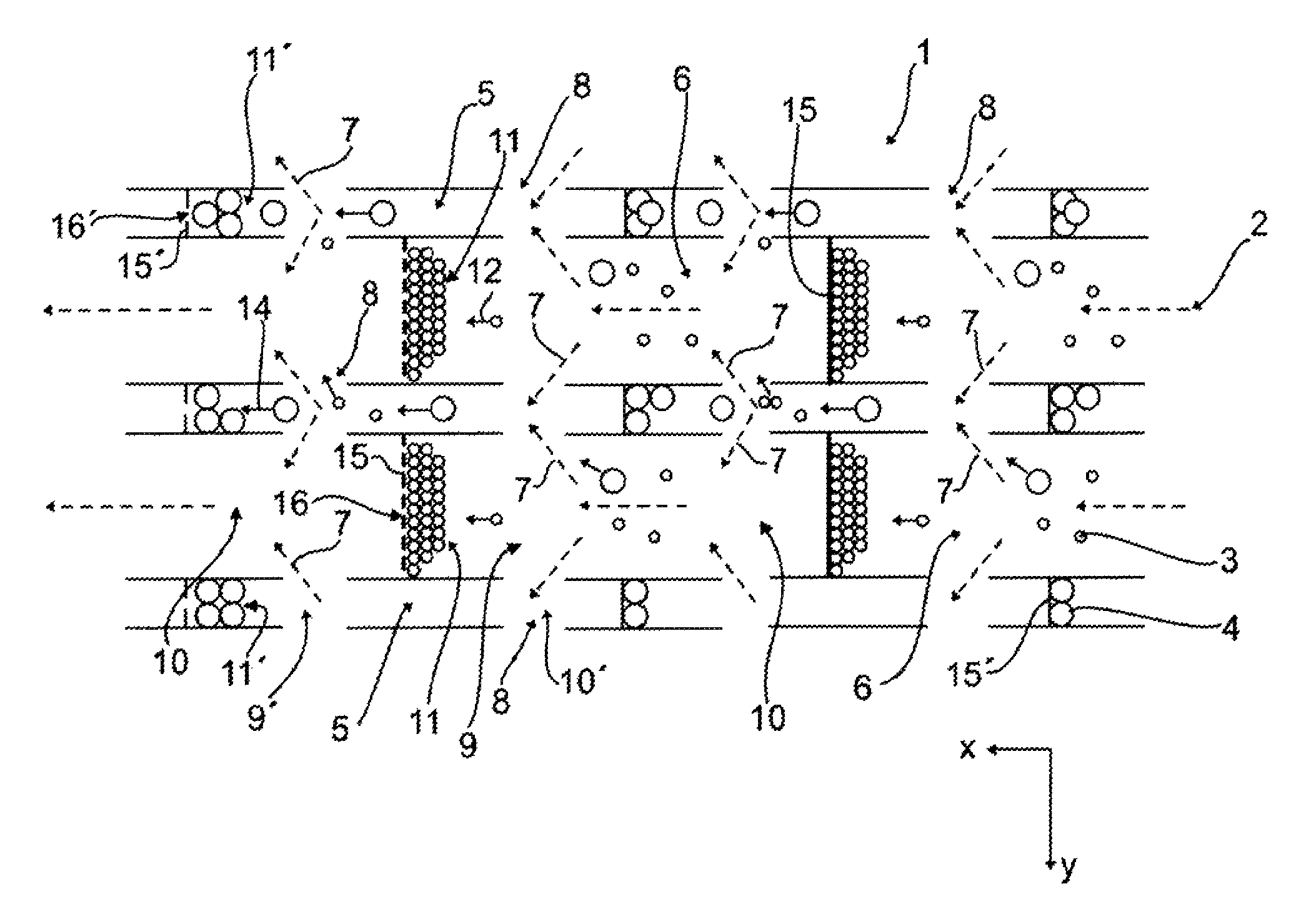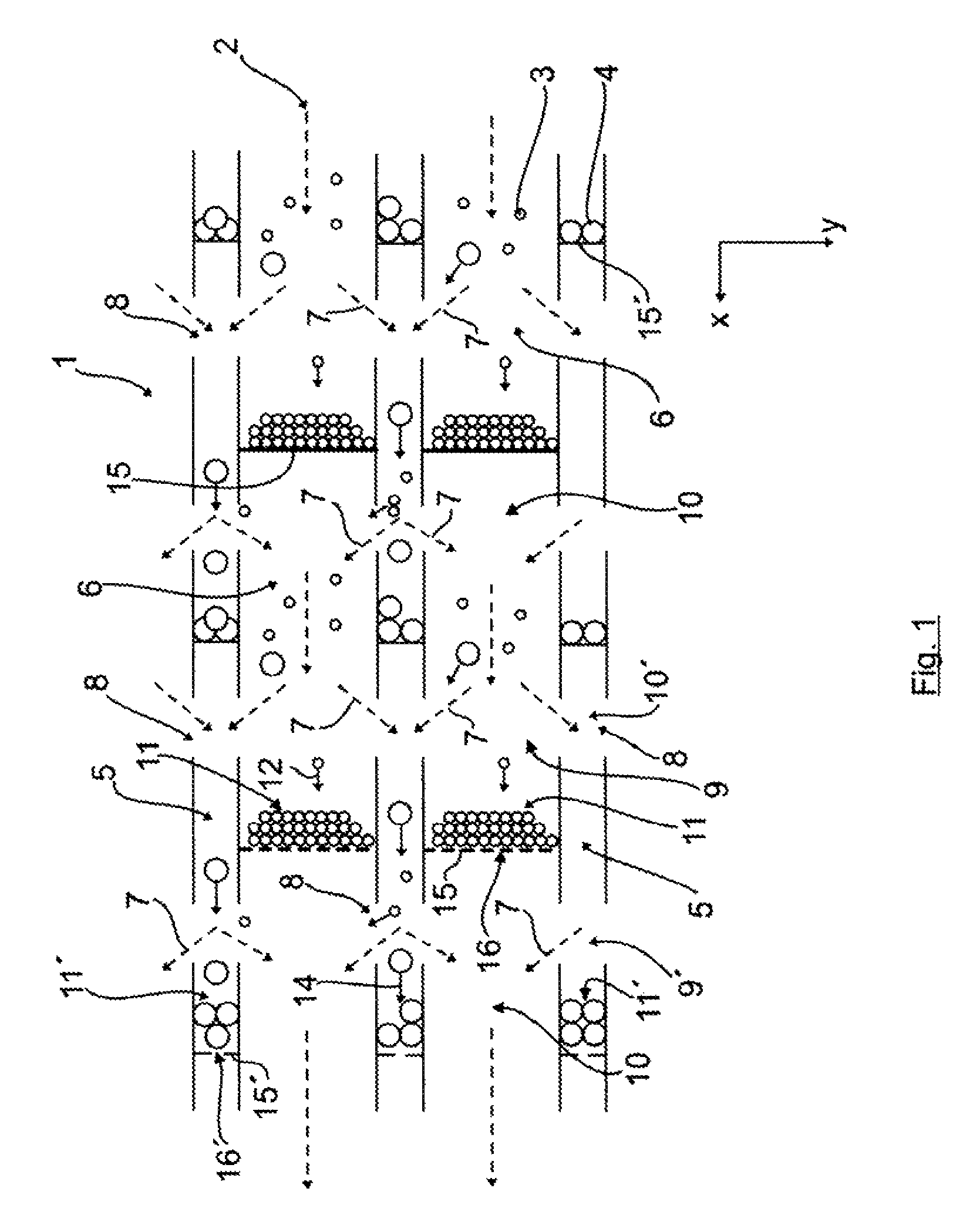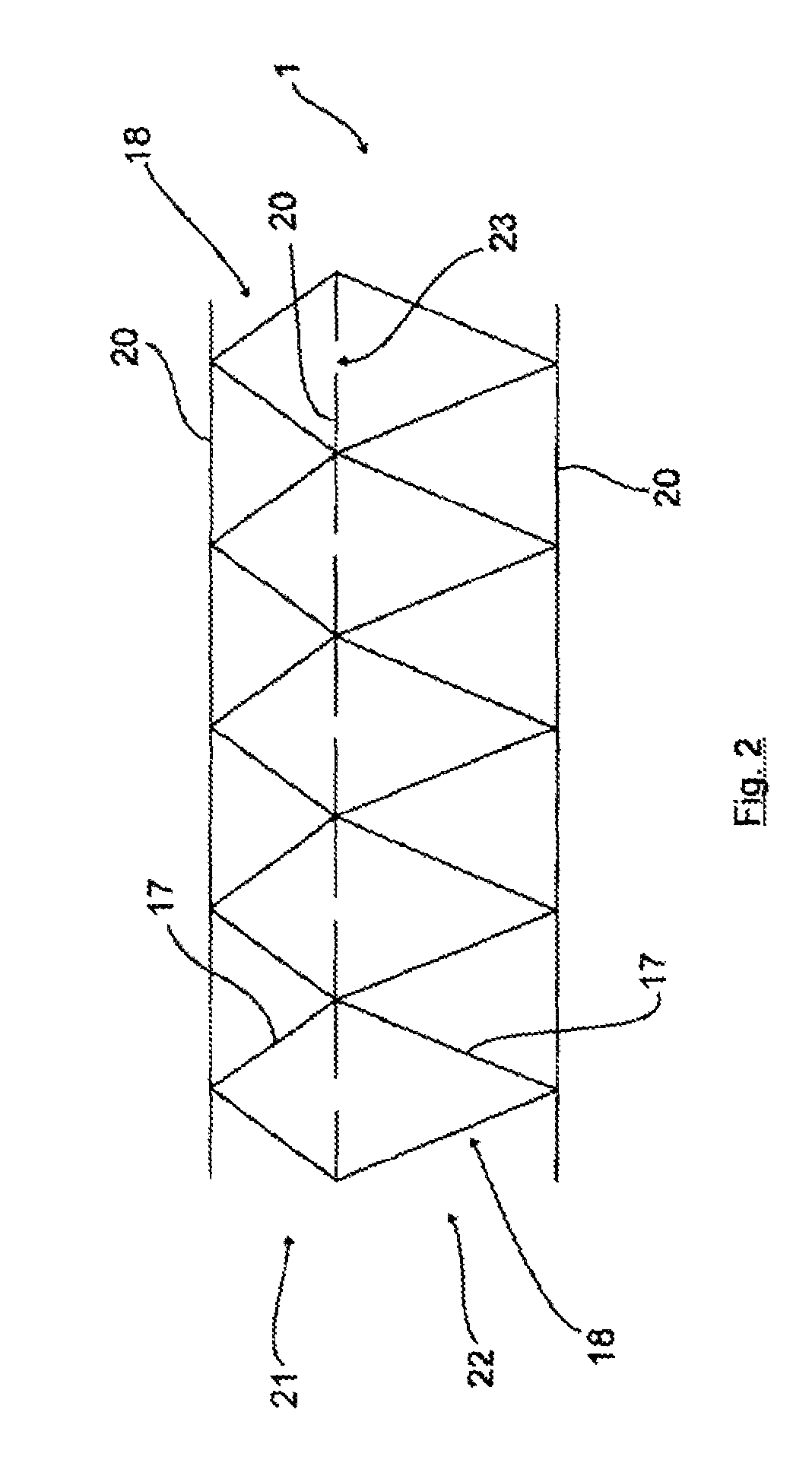Particle separator and method for removing particles from an exhaust gas stream of an internal combustion engine
a technology of particle separator and exhaust gas stream, which is applied in the direction of exhaust treatment, solid separation, phosphorus compounds, etc., can solve the problems of increased fuel consumption, particle emissions, and high exhaust gas counter pressure caused by filters, and achieve the effect of easy perforation
- Summary
- Abstract
- Description
- Claims
- Application Information
AI Technical Summary
Benefits of technology
Problems solved by technology
Method used
Image
Examples
Embodiment Construction
[0030]Referring now to the drawings in detail, FIG. 1 schematically shows a parallel section through at least a portion of a first embodiment of an inventive particle separator 1, and hence is quasi a plan view onto a specific portion of the particle separator 1, illustrating in principle the flow of the exhaust gas stream 2 in conjunction with the separation or removal of very fine particles 3 and large or coarse particles 4.
[0031]For the configuration with regard to the flow conditions, in particular with regard to the flow velocity and the retention time of the exhaust gas stream in various separator zones, the particle separator 1, by way of example only, has two groups of different flow regions, which here, within each of the two groups, are essentially identically embodied as high velocity flow regions 5 and low velocity flow regions 6.
[0032]In contrast to the low velocity flow regions 6, the high velocity flow regions 5 have a distinctly smaller free flow cross-sectional area...
PUM
| Property | Measurement | Unit |
|---|---|---|
| temperatures | aaaaa | aaaaa |
| temperatures | aaaaa | aaaaa |
| sizes | aaaaa | aaaaa |
Abstract
Description
Claims
Application Information
 Login to View More
Login to View More - R&D
- Intellectual Property
- Life Sciences
- Materials
- Tech Scout
- Unparalleled Data Quality
- Higher Quality Content
- 60% Fewer Hallucinations
Browse by: Latest US Patents, China's latest patents, Technical Efficacy Thesaurus, Application Domain, Technology Topic, Popular Technical Reports.
© 2025 PatSnap. All rights reserved.Legal|Privacy policy|Modern Slavery Act Transparency Statement|Sitemap|About US| Contact US: help@patsnap.com



